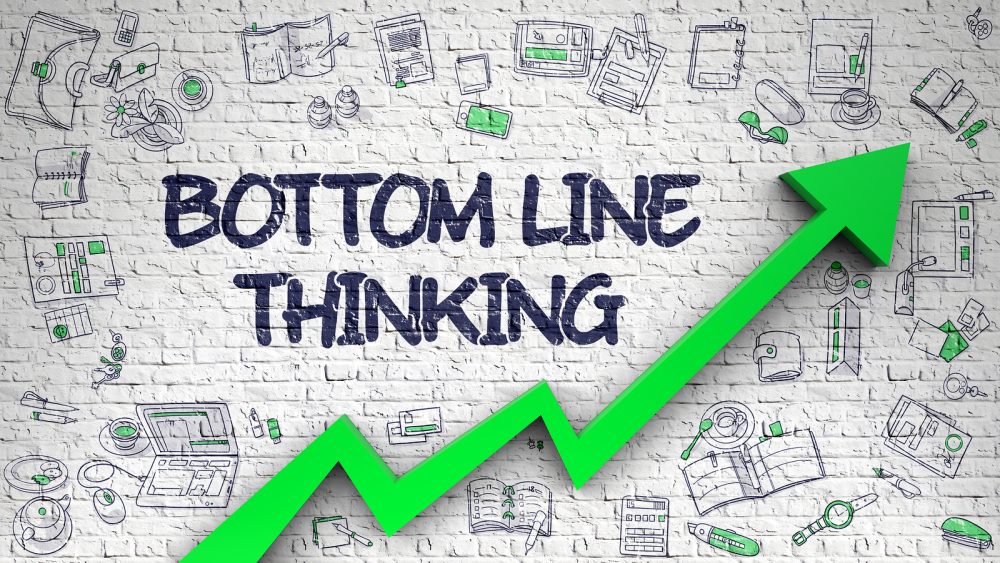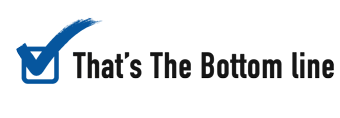What does a productive worker look like?
Companies embarking on the daunting task of developing policies such as “Working from Home” often design the policy with the belief that they need to protect the business from abusers. They regard presence at a desk as “work”, rather than the output of the employee and the results delivered by the employee.
While thinking about this, it struck me – this is actually a loss prevention issue!
Not in the context of theft or fraud, but in the context of value to the organization. While this company may not have had a clear picture of value, I have a sneaking suspicion they are not that much different from the norm.
Ultimately the issue is one of clear goals, performance metrics, and accomplishment.
So in designing the “Working from Home” policy, the litmus test should be based on logic. Does it make sense and is the employee clear on deliverables. If so, and if they are motivated and deliver results – then why not?
If I were to show you the photos below of a man lounging by a beach with a laptop on his chair, and another of a man sitting at a desk on the phone, typing, scribbling notes and eating lunch, which worker would you assume to be the more productive?


You may have picked the beach guy because you are thinking productively and the desk guy is way too obvious, and you’re thinking I am presenting you with a trick question.
The fact is – we just don’t know from simply glancing at there photo. But as businesses, we assume the guy on the right to be more productive because we lose sight of the end goal in our day to day chaos. We then measure performance based on the small acts we see.
Skipping lunch to eat at your desk. Writing typing and chatting on the phone is today’s multi-task. These are indicators, albeit false ones, that a worker is getting a lot accomplished.
Disorganization may be the root cause of these actions, and the bottom line is this; it is a huge loss to the organization, and they just don’t know it is happening.
Let’s do a bit of myth-busting;
“those who start early and finish late, are of greater value to the organization.”
Ummm, not necessarily.
“busy people are more productive”
No, they are just busy.
“multitaskers get more accomplished”
Unless you subscribe to the theory that they simply lack focus and get diverted away from what they are doing and move on to something else.
“calm people have no sense of urgency”
Panic is not urgency, it’s panic.
It would help to work through a few things to get a sense of what I am about to cover with respect to productivity and these myths.
First things first – let’s assume you as the reader are an owner of your business. Even if you are not, read this as if we were talking about your money.
You likely have a vision, a dream, a “raison d’être”, a destination.
To get there you have engaged the support of others, maybe friends, but let’s call them employees, even if you are not paying them.
They do certain things that enable you to bring your dream to life, to get to the finish line.
Some strategists charge an arm and a leg to tell you what you already know. The problem is that you may forget, so I suppose the refresher is money well spent.
Getting caught up in the minutia of the everyday tasks is the start of mediocrity. It is also where this notion of productivity loses its purpose, for we become comfortable with the perception that work is contributing to the end goal – but that is not always the case.
If you owned the business as I suggested then you probably have a good idea of what every person has to contribute to reaching your goal. Call it their part in the plan.
If one person has to contribute by creating a piece of marketing material, you roughly have an idea of how long it would take to do this. So why is it that the creator of this content needs to be at a desk where you can see them? Because it makes us feel comfortable, that all of the cogs are in the right place on the machine. And the machine won’t function unless everything is in its spot, and that spot is behind a desk at the office.
Why is this a loss prevention concern?
Because the bottom line is based on the productivity of your workers. And the productivity of your workers is based on their efforts, and designing a system to inspire the best is going to be the most effective way to achieve these results.
Unproductive workers can cost a business more than traditional shrinkage, but is most often unseen or simply ignored.
Now let’s take a look at the typical workspace, and quantify losses. This will include some habits that have developed by employees to appear busy…back to the myths!
Multitasking?
98% of multitaskers are less productive than workers who focus on one task. In fact, multitasking reduces productivity by as much as 40%. This is because the brain needs to recharge and focus every time the task is changed. The quality of the work product suffers as a result. Don’t be fooled by multitasking unless you are lucky enough to be blessed with the 2%.
Urgency?
Do not confuse panic with urgency, and likewise, calm should not be confused with a lack of urgency.
Urgency is the ability to understand the magnitude of a situation and prioritize tasks accordingly. This may or may not entail an element of speed.
A carefully thought through plan, executed with surgical precision in a timely manner is the best call to action.
Panic is not productive, in fact, it can cause a knee-jerk reaction, and decisions based on pure emotion rather than logic. Having to undo some work done while in panic mode is sometimes more costly than thinking through the best course of action, and executing, even when that takes a bit longer.
Don’t be fooled by the runner as they may be going in a circle.
The Early Bird?
It may catch the worm, but it doesn’t mean it will eat better than the others.
The workaholic has been exposed! and they are not better performers, in fact, studies will show that they may be worse performers. They may work long hours as a result of poor planning.
U.S. studies indicated that over 50 Billion dollars per annum of unused vacation time is left on the table. Is that really a savings for the business? No, because employees who skip vacations don’t get the re-charged that productive employees experience, and the skipped vacation actually negatively impacts productivity. The employee is tired, drained of energy, and lacking the motivation to excel.
I recently spoke to a young (and successful) entrepreneur who talked about his team.
They always meet, but not in person.
They collaborate, but via electronic means.
They have a sense of shared purpose but from different parts of the world.
He said he has an “open location” policy. Every employee knows the expectation and deliverables. The standards are higher and so he lets them be comfortable in how they deliver. IF that means working on a beach with a laptop for 4 hours rather than an office for 8 hours… so be it!
Mission accomplished! That’s the goal, isn’t it?
So why do we get caught up in this trap of measuring performance by all of these other things that apparently don’t matter?
Because there is a disconnect between the key metrics and the ultimate goal.
It happens when business units are not aligned. The company allows individuals to determine the milestones without taking into consideration what that ultimate goal is. And it is usually an issue with respect to communication.
Let’s look at some math;
This example is real.
A company had created a metric for backroom productivity. They had a crew assigned to unload a 53’ container of freight. A time and motion study determined that the task could be accomplished in about 1 hour.
The means of measurement, therefore, was “time”. And so the competition began and determined the better performers were around 51 minutes. Management was happy; if they could shave off 9 minutes than they were being more productive. The new goal was to break the 50-minute mark.
The reality; there was no difference in 51 minute and 60 minutes. The crew was still on site, and the merchandise didn’t make it to the sales-floor any faster. It did not increase the amount of merchandise sold to the customer.
In fact, the breaks taken by the crew were excessive because they were physically exhausted.
And the sad part – backroom injuries went up from material handling claims.
So why the rush? Because management was lulled into a false sense of delight over this perceived increase in productivity and didn’t see the big picture.
Does this mean to suggest you settle for mediocrity?
Not at all. Just be clear on the value of the work that is performed. And be aware of the waste that occurs when appropriate goals are not established.
So what’s the Bottom Line?
Policies and procedures should be based on logic. Think of what the needs are from a pragmatic approach. Ensure that the goals, your culture, and the laws are taken into consideration. Take care not to deviate or allow emotions to get the better of you when you put pen to paper.
Metrics should measure real milestones aligned to goals. Start with the destination in mind and backtrack to determine milestones. If you start with milestones, you could be going down the wrong road.
Supervision of work should take the end goal into consideration. Are people working meaningfully towards the end goal? Did the business allow them to integrate “work” that is not aligned with the goal?
Management should not be conned by the appearance of hard workers. Good leaders know where they want to be at the end of the day, and the steps their team needs to take to get there. Understanding this will give them an appreciation of the effort required, and in turn, will allow them to recognize value.
Look for substance and value in your workers. As eluded to in the above point, sometimes the true value comes from the most surprising areas and people. More is not always better; there are many examples of this is everyday life and I encourage you to take a minute right now and think about people you have worked with in the past.
Productivity is the key – not where people work from. Follow these simple rules and working from home or the office or the beach for that matter, becomes somewhat irrelevant.
Your Bottom Line will also be all the better for it.





